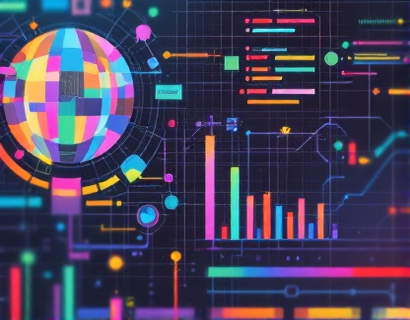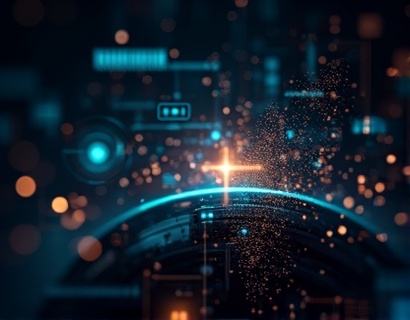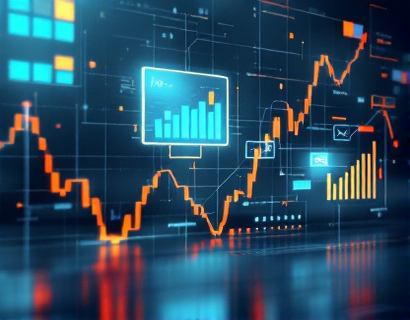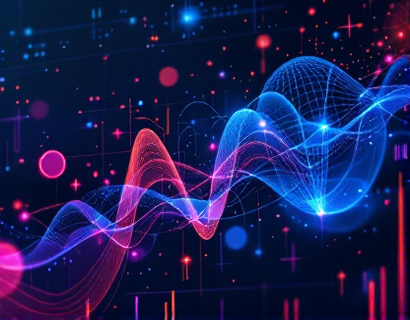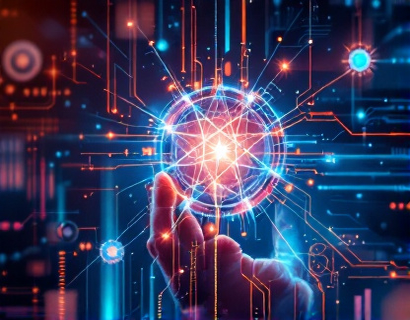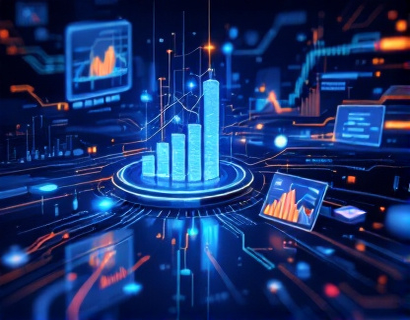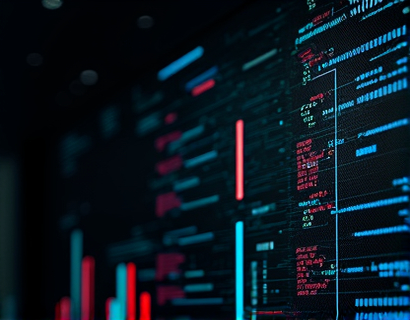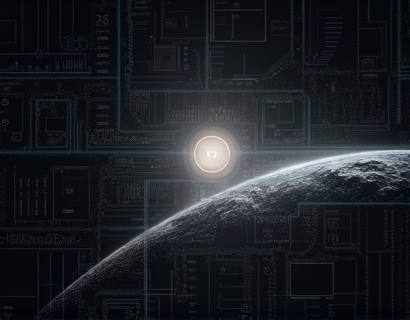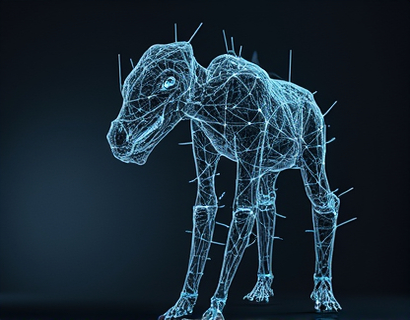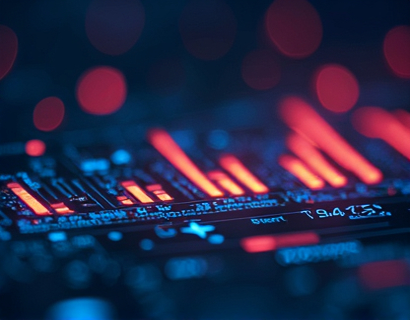Crypto and AI: Powering the Future of Digital Solutions with Blockchain and Machine Learning
The intersection of cryptocurrency and artificial intelligence (AI) is revolutionizing the digital landscape, creating a new era of innovation and efficiency. This fusion is not just a technological curiosity but a transformative force that is reshaping how we interact with digital solutions. By leveraging the strengths of blockchain technology and machine learning, developers and businesses are crafting advanced, seamless, and empowering experiences for users worldwide. This article delves into the intricate ways crypto and AI are merging to drive the future of digital solutions.
Understanding Blockchain and AI
Before exploring their convergence, it's essential to understand the individual technologies. Blockchain, at its core, is a decentralized ledger that records transactions across multiple computers in such a way that the registered transactions cannot be altered retroactively. This technology ensures transparency, security, and immutability, making it ideal for applications requiring trust and verification without intermediaries.
Artificial intelligence, on the other hand, encompasses a range of technologies designed to simulate human intelligence in machines. These include machine learning, natural language processing, and computer vision. AI's ability to analyze vast amounts of data, learn from patterns, and make decisions autonomously has profound implications across various industries.
Synergy Between Crypto and AI
The combination of blockchain and AI creates a synergy that amplifies the capabilities of both technologies. Blockchain provides a secure and transparent framework for AI systems to operate, ensuring data integrity and reducing the risk of fraud. Conversely, AI enhances blockchain's functionality by optimizing processes, improving security, and enabling smarter decision-making.
One of the primary areas where crypto and AI intersect is in the development of decentralized applications (dApps). These applications run on blockchain networks and utilize AI to provide intelligent, user-centric services. For instance, AI-driven dApps can analyze user behavior and preferences to offer personalized experiences, all while maintaining the security and transparency inherent to blockchain.
Enhancing Security with AI
Security is a paramount concern in the realm of cryptocurrency and blockchain. Traditional security measures can be bypassed or compromised, leading to significant losses. AI brings a new dimension to security by enabling predictive analytics and anomaly detection. Machine learning algorithms can identify unusual patterns and potential threats in real-time, allowing for proactive measures to be taken.
For example, AI can monitor blockchain networks for suspicious activities, such as unusual transaction volumes or patterns that deviate from the norm. By flagging these anomalies, AI helps maintain the integrity of the blockchain, ensuring that transactions are legitimate and secure. This integration of AI in security protocols not only enhances protection but also builds user trust in blockchain-based systems.
Optimizing Smart Contracts with AI
Smart contracts are self-executing contracts with the terms of the agreement directly written into code. They automate and enforce contractual obligations without the need for intermediaries. However, the complexity of smart contracts can sometimes lead to vulnerabilities and inefficiencies. AI can optimize these contracts by analyzing code for potential issues, suggesting improvements, and even automating the creation of more robust smart contracts.
AI algorithms can review vast amounts of smart contract code, identifying patterns and potential risks that human developers might overlook. This not only streamlines the development process but also reduces the likelihood of errors and security breaches. Moreover, AI can dynamically adjust smart contract parameters based on real-time data, ensuring that agreements remain relevant and effective in changing conditions.
AI-Driven Decentralized Finance (DeFi)
Decentralized Finance (DeFi) is a rapidly growing sector that leverages blockchain to provide financial services without traditional intermediaries. AI plays a crucial role in enhancing DeFi platforms by offering sophisticated tools for risk management, portfolio optimization, and fraud detection. AI algorithms can analyze market data, predict price movements, and suggest optimal trading strategies, empowering users to make informed decisions.
One notable application is AI-powered lending and borrowing platforms within the DeFi ecosystem. These platforms use machine learning to assess creditworthiness, set interest rates, and manage risk more effectively. By automating these processes, AI reduces the need for manual intervention and speeds up transaction times, making DeFi more accessible and efficient.
Personalization and User Experience
The fusion of crypto and AI is not just about security and efficiency; it's also about enhancing user experience through personalization. AI algorithms can analyze user data to understand preferences and behaviors, enabling the creation of tailored digital experiences. In the context of blockchain and crypto, this means that users can enjoy customized services and applications that cater to their specific needs and interests.
For instance, AI-driven recommendation systems can suggest crypto assets, dApps, and services based on a user's past interactions and preferences. This level of personalization not only improves user satisfaction but also increases engagement and adoption of blockchain-based solutions. By understanding and anticipating user needs, these systems create a more intuitive and user-friendly environment.
Challenges and Considerations
While the integration of AI and blockchain offers numerous benefits, it also presents challenges that must be addressed. One of the primary concerns is the computational resource intensity of AI algorithms, which can strain blockchain networks. To mitigate this, developers are exploring more efficient AI models and optimizing blockchain architectures to handle the increased load.
Another consideration is the regulatory landscape. As crypto and AI technologies evolve, regulatory frameworks are still catching up. Ensuring compliance while innovating is a delicate balance that requires collaboration between technologists, policymakers, and industry stakeholders. Transparency and ethical practices are essential to gain public trust and support.
Future Prospects
The future of crypto and AI is bright, with numerous potential applications and innovations on the horizon. One exciting area is the development of AI-powered oracles, which serve as bridges between blockchain and external data sources. These oracles can provide real-time data to smart contracts, enabling more dynamic and responsive applications.
Another promising direction is the integration of AI in blockchain governance. AI can assist in decision-making processes, ensuring that governance mechanisms are fair, transparent, and adaptive to changing conditions. This can lead to more decentralized and democratic blockchain ecosystems.
Additionally, the combination of crypto and AI holds the potential to revolutionize industries beyond finance, such as healthcare, supply chain management, and education. By leveraging the strengths of both technologies, we can create more secure, efficient, and user-centric digital solutions that drive progress and innovation.
Conclusion
The convergence of cryptocurrency and artificial intelligence is a powerful force that is reshaping the digital world. By combining the security and transparency of blockchain with the intelligence and adaptability of AI, we are witnessing the emergence of advanced, seamless, and empowering digital solutions. As these technologies continue to evolve, they will undoubtedly play a pivotal role in shaping the future of technology and beyond.




